
Photosynthetically active radiation / THE ACTION SPECTRUM, ABSORPTANCE AND QUANTUM YIELD OF PHOTOSYNTHESIS IN CROP PLANTS
Blue light inhibits seed emergence
| Wks | R:B | PR (Ch 1) | RB (Ch 2) | PR (Ch 3) | FR (Ch 4) | UV (Ch 5) |
| 12 | 60:40 | 0.90 | 1.00 | 0.90 | 1.00 | 0.10 |
| 2 | 70:30 | 1.00 | 0.73 | 1.00 | 1.00 | 0.10 |
| 8 | 80:20 | 1:00 | 0.42 | 1.00 | 1.00 | 0.10 |
| 2 | 70:30 | 1.00 | 0.73 | 1.00 | 1.00 | 0.10 |
Stage R:B 1 12 60:40 2 2 70:30 3 8 80:20 4 2 70:30
A 6:1 or 5:1 ratio of red to blue is ideal.
For tomato 30-50% blue photon flux is recommended for optimal growth and development.
Red light causes very vigorous growth.
Red light alone causes malformed, bleached, stretched, swollen growth. Blue light supplementation corrects these issues – stretching is reduced, chlorophyll production and efficiency goes up, and stomatas open to release water through the leaves (this is good and called transpiration).7,8
Green light, while obviously the most reflected color off of plants, is also the type of light that can penetrate deepest into leaves and canopies. If you have a crop with a thick canopy or leaves, green light can boost whole-plant photosynthesis. Some crops, however, receive green light as a signal to stretch or to slow growth (particularly under low light level conditions).
Blue light can inhibit seed emergence.
Ratio of red / far red Ratio of blue / red
| Plant Pigment | Function |
| Chlorophyll a and b | Photosynthesis |
| Carotenoids | Photosynthesis, photo-production |
| Cryptochomes | endogenous rhythms, organ orientation, stem elengation, stomatal opening, germination, leaf expansion, root growth, phototropism, flowerin induction |
| Phototropins | Phototropism, stomatal opening, chloroplast movement, leaf expansion |
| Red and far red Phytochromes | Leaf expansion, neighbor perception, shade avoidance, stem elongation, seed germination, flowering induction |

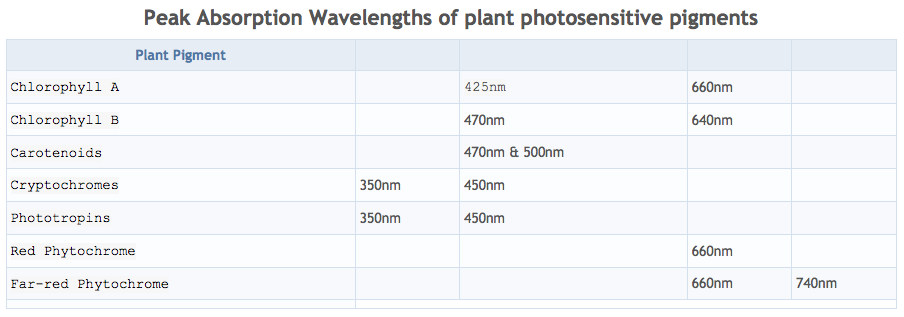
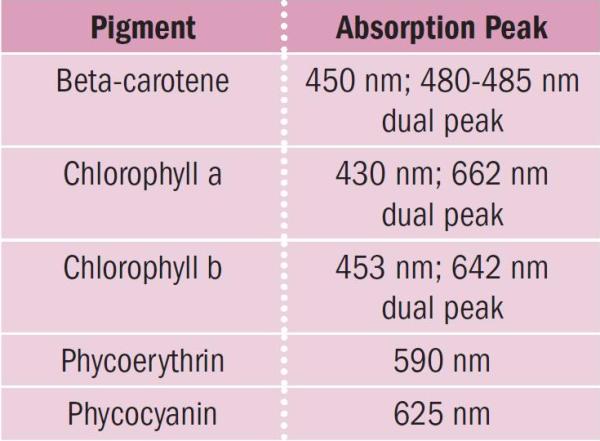
Measurement of the absorption of light is complicated by the solvent used to extract the chlorophyll from plant material, which affects the values obtained.
| Plant Pigment | 430 | 460 | 660 | 740 | ||||
| Chlorophyll a | *465 | *665 | ||||||
| Chlorophyll b | *450 | *640 | ||||||
| Carotenoids | 470 | 500 | ||||||
| Cryptochomes | 350 | 450 | ||||||
| Phototropins | 350 | 450 | ||||||
| Red Phytochrome | 660 | 740 |
Chlorophyll-a: 430nm/662nm Chlorophyll-b: 453nm/642nm Carotenoids: 449nm/475nm
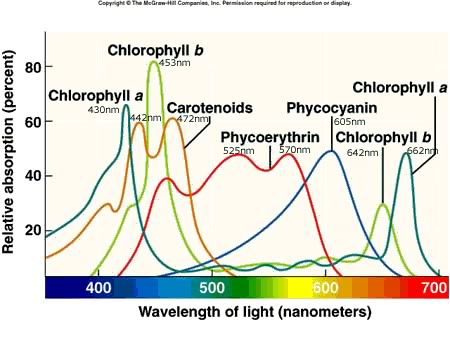
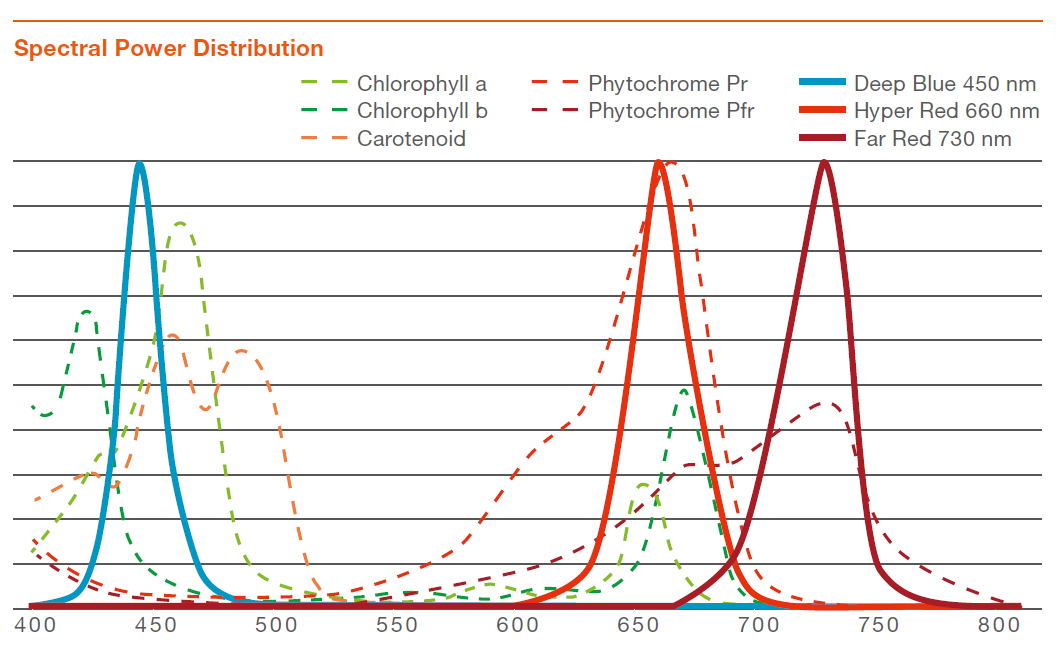
CREE
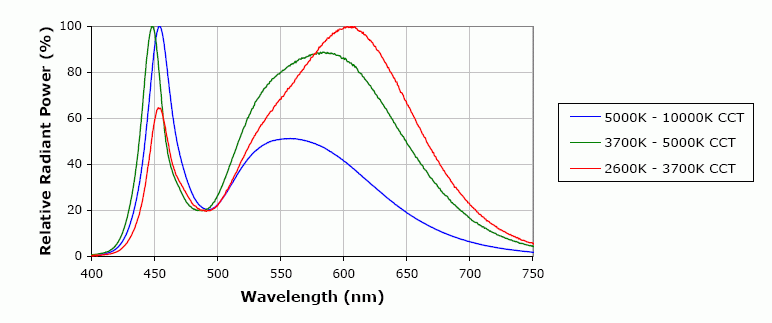
LED ENGIN Warm White (LZ1-00WW05)
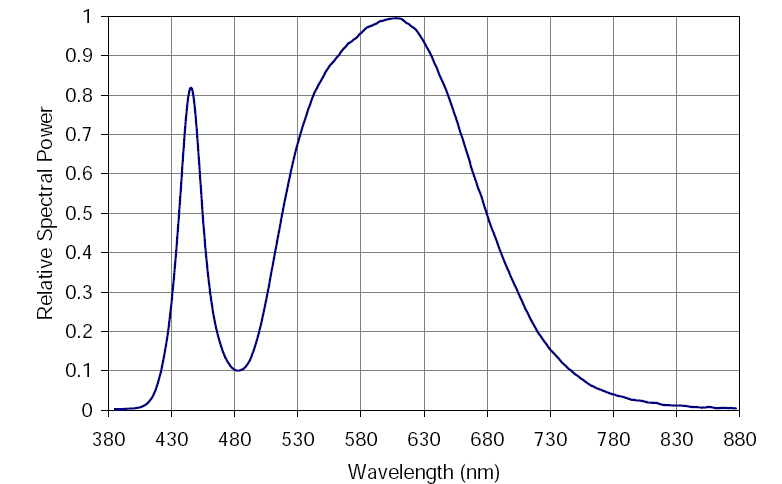


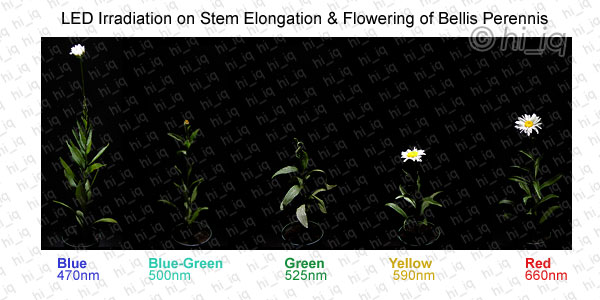
YOU NEED WHITE LED TOO (warm white is better)! even if a plant maximize the usage of red and blue light for photosynthesis, it's not the only function mediated by light in a plant. A plant still need some green, yellow, orange and far red light to be healthy. Without some complete spectrum complement, most plants will have a lot of problems grown only under red and blue."
"Also keep in mind that by only using the standard "hi power" red led at 625nm, you're missing the 660nm required for phytochrome (mediator of flowering and other functions). Some warm white LED will provide that missing part of the spectrum in the red / far red or you can also add some 660nm. Since a good part of the output of white LED is also in the blue spectrum (The main source of a white LED is a blue LED with phosphor coating that down convert part of that light to other wavelength), you could simply replace some blue LED with white one. And it's usually in the 455nm, very important for cryptochrome (if you are only using 470nm light, you might have an etiolation problem, both 455 and 470nm are important). Cree white warm (mounted on star) are a good choice, and I would add some cold white in the mix.
Adjusting the lights give added benefits. Varying the amount of red and blue light can impact the overall quality of the plant. For example, increasing the red light can make the plant more compact, the stems stay closer together when growing.